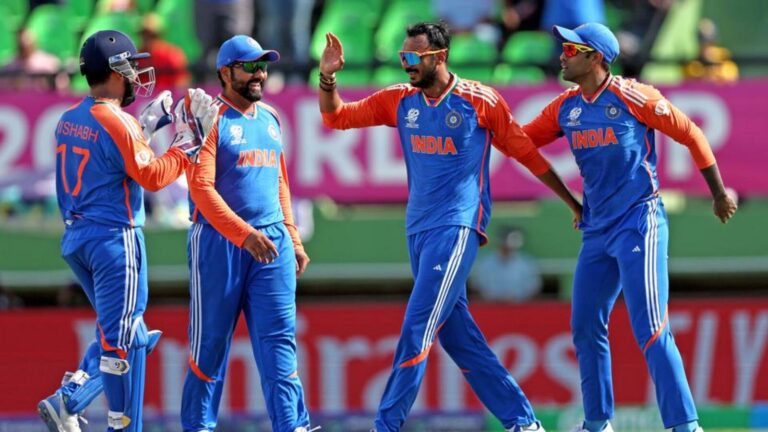The Impact of Cricket World Cups on Global Sports and Entertainment
11xPlay, Allpaanel: The Cricket World Cup stands as one of the most prestigious events in the realm of cricket, showcasing the pinnacle of international competition in the sport. Established in 1975, the tournament has been held every four years, with various nations coming together to battle for the coveted title. Over the years, the Cricket World Cup has captured the attention of millions of fans worldwide, becoming a celebrated spectacle that unites diverse cultures through the love of the game.
Each Cricket World Cup edition brings forth riveting matchups, fierce rivalries, and unforgettable moments that have etched themselves into the annals of cricketing history. From underdog triumphs to stunning upsets, the tournament never fails to deliver gripping encounters that leave fans on the edge of their seats. With a rich tapestry of teams representing different corners of the globe, the Cricket World Cup epitomizes the spirit of competition and sportsmanship at its highest level, making it a cornerstone of the cricketing calendar.
Evolution of Cricket World Cups
The Cricket World Cup has undergone significant evolution since its inception in 1975. Initially, the tournament was a 60-over per side contest with traditional white clothing and red cricket balls. Over the years, several changes have been introduced to make the game more appealing and competitive. One of the most notable changes was the shift to colored clothing and white balls in the 1992 World Cup, bringing a more modern and dynamic element to the sport.
Moreover, the format of the tournament has evolved to include more teams, providing opportunities for emerging cricketing nations to showcase their talent on a global stage. The introduction of knockout stages, super overs, and the Decision Review System (DRS) has added drama and excitement to the games, making the Cricket World Cup one of the most anticipated events in the sporting calendar.
Influence on Global Sports Industry
The Cricket World Cup holds a significant influence on the global sports industry. The tournament’s massive following and widespread viewership have paved the way for cricket to become a prominent player in the world of sports. The intense competition, thrilling matches, and the prestigious title of being crowned world champions have captivated fans worldwide, driving interest and investment in the sport.
Moreover, the Cricket World Cup serves as a platform for showcasing talented players on an international stage. The exposure gained by cricketers during the tournament not only elevates their individual careers but also contributes to the overall growth and development of the sport. The influx of resources, sponsorships, and partnerships drawn to the event further solidifies cricket’s position as a major player in the global sports industry.
Impact on Television Viewership
The Cricket World Cup has had a significant impact on television viewership over the years. The tournament garners a massive audience worldwide, with millions of cricket enthusiasts tuning in to watch the matches. This surge in viewership has not only boosted the popularity of cricket but has also attracted a wider global audience to the sport.
Television networks have capitalized on the high viewership of the Cricket World Cup by broadcasting matches across various channels and platforms. As a result, the tournament has become a lucrative opportunity for broadcasters to attract advertisers and sponsors looking to reach a large and engaged audience. The intense competition and thrilling moments of the World Cup matches have kept viewers glued to their screens, making it a premier event in the world of sports broadcasting.
Growth of Cricket as a Global Sport
Cricket has undoubtedly grown into a global sport that transcends boundaries and attracts a massive following worldwide. The sport’s popularity has surged beyond its traditional strongholds in countries like England, Australia, and India, reaching new audiences in regions such as the United States, the Middle East, and even parts of Europe. This expansion of cricket’s reach can be attributed to the efforts of various cricket boards, international governing bodies, and the strategic hosting of global tournaments like the Cricket World Cup.
With the proliferation of T20 leagues such as the Indian Premier League (IPL) and the Big Bash League (BBL), cricket has found a way to engage fans through fast-paced, high-energy matches that appeal to a wider demographic. These leagues not only showcase the sport’s competitive spirit but also provide a platform for emerging talents to shine on a global stage. As a result, cricket has seen an influx of new followers, both young and old, who are captivated by the excitement and drama that the sport offers.
Commercial Opportunities Created by World Cups
One of the most significant aspects of Cricket World Cups is the plethora of commercial opportunities they create for various stakeholders involved in the sport. From major corporations to small businesses, the World Cup serves as a platform for increased visibility, brand exposure, and engagement with a global audience of cricket enthusiasts.
Sponsorship deals, advertising slots, merchandise sales, hospitality packages, and broadcasting rights are just some of the lucrative avenues through which businesses capitalize on the popularity and reach of the Cricket World Cup. The event not only fosters partnerships between brands and cricketing bodies but also opens up avenues for cross-promotional activities, product launches, and fan engagement initiatives that drive revenue and create lasting connections with consumers.
Cultural Significance of World Cups
Cricket World Cups hold immense cultural significance, transcending boundaries and bringing together people from diverse backgrounds under one common passion for the sport. The events serve as a platform for nations to showcase their unique cultures, traditions, and values on a global stage, fostering a sense of unity and camaraderie among fans worldwide. Through cricket, countries have an opportunity to celebrate their heritage and national pride, creating a rich tapestry of cultural exchanges that enrich the overall sporting experience.
The cultural impact of Cricket World Cups extends beyond the game itself, influencing fashion trends, music, and even culinary preferences. Spectators at the matches often don their country’s traditional attire, waving flags, and singing national anthems, creating a vibrant and colorful atmosphere that reflects the diversity of the global cricket community. Moreover, the tournaments have become a melting pot of cultures, providing a platform for fans to interact, share experiences, and forge lasting bonds that go beyond the boundaries of the field.
Influence on Sponsorship Deals in Sports
Sponsorship deals in sports have been significantly impacted by the Cricket World Cup events. The global reach and popularity of these tournaments have made them attractive opportunities for brands looking to gain visibility and connect with a diverse audience. Big-name sponsors are drawn to the exposure offered by the World Cups, as they provide a platform to enhance brand awareness on an international scale.
Moreover, the high viewership numbers associated with Cricket World Cups make them prime real estate for sponsors seeking to maximize their marketing efforts. With millions of fans tuning in from around the world, sponsors have a unique chance to engage with a broad and engaged audience. This level of exposure has led to lucrative sponsorship deals being struck, benefiting both the event organizers and the companies involved.
Legacy of Cricket World Cups
Cricket World Cups have left a lasting legacy on the sport, shaping the way the game is played and perceived worldwide. The tournaments have not only showcased top-tier talent but also fostered a sense of unity and camaraderie among cricket enthusiasts across the globe. As a result, the legacy of Cricket World Cups lives on through the memories created, the records broken, and the passion ignited in fans from diverse backgrounds.
Moreover, the Cricket World Cups have played a pivotal role in popularizing the sport in non-traditional cricketing nations. By providing a platform for teams from emerging cricketing countries to compete on the world stage, these tournaments have inspired a new generation of players and fans. The legacy of Cricket World Cups, therefore, extends beyond the boundaries of the game, influencing the growth and development of cricket as a global sport with a rich and vibrant history.
Heading 10: Future Trends in Cricket World Cup Events
The future of Cricket World Cup events is set to witness a significant shift towards digital innovation and fan engagement. With the advancement of technology, virtual reality experiences are likely to become more prominent, offering fans an immersive way to enjoy the games from anywhere in the world. Additionally, the use of data analytics and artificial intelligence is expected to revolutionize player performance analysis, strategy development, and fan-driven content creation.
Furthermore, there is a growing emphasis on sustainability and eco-friendly practices within sporting events, including Cricket World Cups. Future tournaments may prioritize eco-conscious initiatives such as carbon offset programs, waste reduction strategies, and renewable energy sources to minimize the environmental impact of hosting such large-scale sporting events. Additionally, with the increasing globalization of cricket, we can anticipate more diverse host countries and an expansion of the tournament format to include new teams, further solidifying cricket as a truly global sport.







